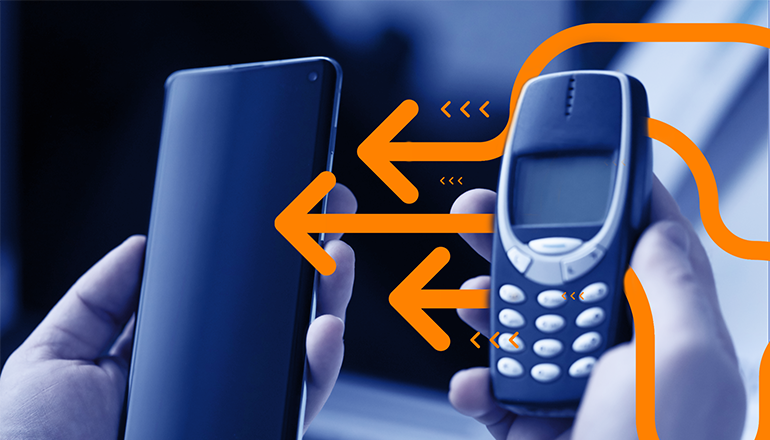From Smartphones to Smart Cars: Lessons Learned from the Smartphone Revolution
November 24, 2020
Idan Nadav
Co-founder

Industry after industry is going through a digital transformation with technology completely revolutionizing even the most traditional of fields. While it’s hard to remember a time before Smartphones and iPhones were all the rage, the mobile phone industry did go through a revolution of its own in order to get to where it is today. The automotive industry - in the midst of its own paradigm shift - can learn lessons from the history of mobile phones in order to achieve equal (or greater) success.
Hand phone- Out. Smartphone- In.
No one predicted that the iPhone would become the staple that it is today. In fact, in 2007, Microsoft CEO Steve Ballmer laughed off the threat of Apple, claiming that a device without even a keyboard has no use in the business world. At the time, what Ballmer said made sense. After all, Apple introduced the iPhone when the cell phone industry was a saturated market with plenty of players for consumers to choose from. All trends were pointing at smaller devices and a firmly established user experience that revolved around making phone calls. Despite this, Apple introduced a larger phone with outdated connectivity and poor cellular reception.
We all know what happened next. The iPhone changed the shape of the cell phone industry forever by taking the same device - a mobile phone - and turning it into a brand new product - a smartphone. Ultimately, all of their rivals were driven out of the market completely (or moved to Android, the one competitor that actually poses a threat) as the iPhone created an entirely new paradigm for the whole industry.
It’s All About the Consumer
Apple, as a nearly bankrupt company, was able to create an entirely new smartphone industry by focusing on the new consumer with a user-centric device. This drove the paradigm shift in the mobile phone industry and is now doing the same in the automotive industry. Apple capitalized on the fact that a new consumer was on the scene - a younger generation looking for a new user experience not necessarily centered simply around making phone calls. The consumer wanted a device that answered more of their needs - the ability to communicate, listen to music, track their calendar and more in the palm of their hands.
This same consumer, whose expectations have now advanced - and are ever-more user-centric - thanks to the smartphone revolution, should be in the minds of automotive OEMs as they navigate the automotive industry’s transformation. This consumer:
- Expects a customized, individualized experience
- Does not want to have to “configure” new devices, but rather they should work automatically
- Is used to maintenance-free hardware and software
- Wants quick technological turnover and updates - the newest version and features always on demand
- Is not afraid of rapid changes and trying new trends
- Values service as a product
So What’s an Automaker To Do?
New automakers must channel their inner Apple. Traditional OEMs have a work model rooted in over 100 years of history that relies heavily on a supplier chain and a long development cycle. In short, the long production time means that cars may be outdated as soon as they come off the assembly line. To continue competing in the new reality, OEMs must focus on the fact that their customers are shifting from being drivers of a vehicle (where the emphasis is on the performance of the vehicle) to subscribers to a service (where the emphasis is on the user’s experience).
New cars will be like new iPhones - they will be fully customizable to suit the drivers’ demands. New car brands will build brand loyalty with their customers to have them loyal to the experience that they provide, similar to Apple. In order to create cars that fit this new paradigm, traditional OEMs will need to move away from their long-standing methods and embrace new technologies that will allow them to break the scalability walls that limit their current evolution. This will make them become the Apples of the automotive world.
Click here for a recap of the GuardKnox TU webinar where we explain how OEMs can make this transition.




